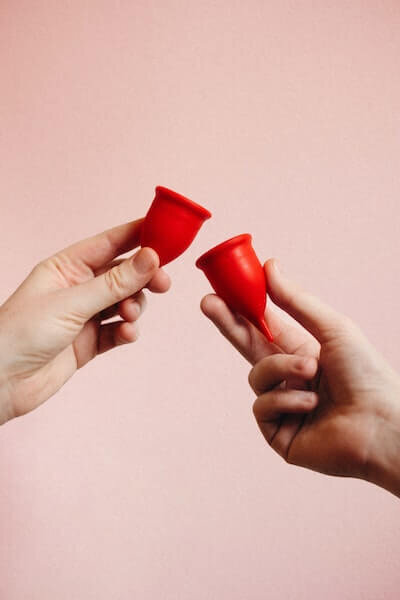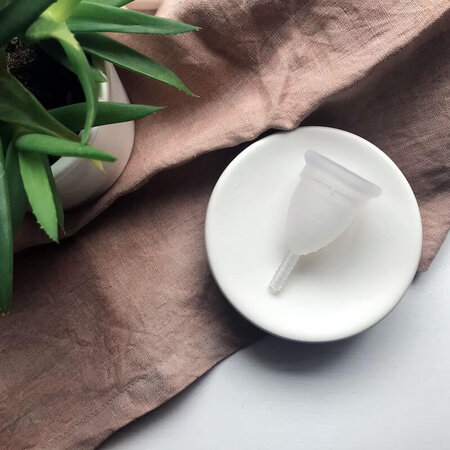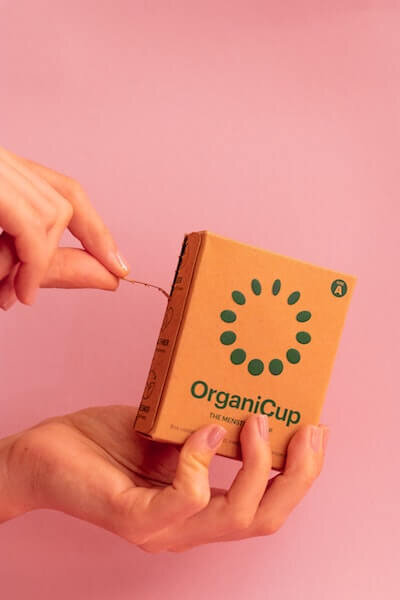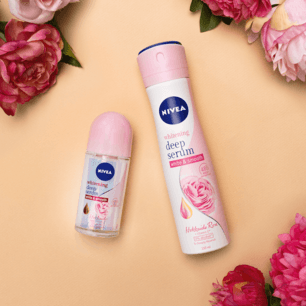Considering swapping your sanitary pad for something more eco-friendly? You may be wondering what it’s like to use a menstrual cup.
The idea of inserting a foreign object into your vagina to manage your period can be intimidating. In our region, even the classic tampon isn’t as popular as pads because some fear that it can take away virginity, a thing that is still highly valued in several cultures. Despite this, growing interest in reusable products brought the menstrual cup to the spotlight. The menstrual cup market has even been projected to continue to grow in the coming years.
Curious to know more? Keep reading to know the pros and cons of menstrual cups and what it’s like to use one.
How menstrual cup works
A menstrual cup is generally made of medical-grade silicone which means that it’s tested for safe, compatible use with the human body. It’s meant to be inserted into the vagina close to the cervix where it will collect your period (as opposed to absorbing the discharge the way pads and tampons do). To insert a menstrual cup safely, you need to fold it so it can fit in your vagina. Once inside, the cup will “open” and be “suctioned” in place.
The Punchdown Fold is the smallest fold for those with tight vaginal opening.
Menstrual cups should be emptied regularly (at least twice a day) to prevent any complications. You can do this by gently squeezing the base part of the menstrual cup until it releases the suction. Once done, you can just pull it out. You have to wash your cup with mild soap and water before putting it back in. Simple, right? Now that you know how a menstrual cup works, let’s move on to the pros and cons of using one.
Pros and cons of using menstrual cup

(Photo from: Monika Kozub via Unsplash)
Like other period products, menstrual cups have their advantages and disadvantages. To help you decide if you should invest in one, here are the pros and cons.
Pro: Freedom of movement and less worries
Wearing sanitary pads can be restrictive for some, especially those with a heavy flow. You have to reduce physical activity to keep leaks from happening. With the menstrual cup, you don’t have to constantly worry about an overly soaked pad. You can move freely without worrying about a sudden shift of pad placement that gives you that “wedgie” feeling. You can also take a swim even if you’re on your period as menstrual cups don’t leak if properly inserted.
Con: It may take time to get the best fit
Each body is different and you may be surprised to know that the cervix can be higher or lower in some people and this can affect the fit of your menstrual cup. If it’s ill-fitted, there’s a chance that it will leak and cause discomfort. There’s a trial-and-error stage and you have to be patient to know the best fit for you.
Pro: You need to empty menstrual cups only once or twice a day
Unlike sanitary pads which can be fully soaked after three to four hours, menstrual cups can collect period blood for a longer time with most brands recommending menstrual cups to be emptied after 12 hours of use. However, it still varies from person to person, and you may need to empty your cup more often if you have heavier flow to avoid complications. Although still rare, keeping menstrual cups in your body for too long may lead to toxic shock syndrome (TSS).

(Photo from: Amy Murrell via Unsplash)
Con: Removal can be a hassle for beginners
When removing the menstrual cup, you need your muscles to be relaxed. Otherwise, your vaginal muscles can grip the cup even tighter which can make the ordeal more stressful. This will make it harder to remove — and the cycle goes on. Although with more practice, removing a cup can get easier.
Pro: It’s cost-efficient and eco-friendly
While sanitary pads can compound costs over time, menstrual cups can be used again and again. Menstrual cups are also kinder to the environment because of their reusable nature.
Con: You still have to replace it after a few years
Even if they are sturdy, menstrual cups are not meant to last forever. For hygiene purposes, it’s recommended to replace your cup every two to four years depending on your upkeep and use.
What it’s like to use a menstrual cup
Decided to give a menstrual cup a try? It’s important to know what to expect so you mentally prep yourself. 26-year-old law student and badminton player Hera Ydulzura shares her experience and tips about what it’s like to use a menstrual cup.
What was it like the first time you tried it?
“It was intimidating. The one I bought was a size A Organicup. It's almost the size of a shot glass! I tried putting it in (my vagina) on my third day of menstruation. I remember sitting on the toilet for a few minutes because the experience was really intimidating, but I knew I had to do it since the menstrual cup is already in my hands and I already did my research. Thankfully, it went in smoothly and successfully.

(Photo from: Oana Cristina via Unsplash)
There was that weird feeling of having a foreign object inside your vagina which disappears after a few minutes. I went to school and came back home without encountering any problems with my menstrual cup.
When I came back home for removal and rinsing, it also went well. I was quite surprised at how little the amount of blood I was menstruating. I thought I was menstruating a lot because I had to change pads every two to four hours before, but after a full eight hours of using the cup it wasn't even half full. I must say, seeing my menstrual blood in a cup is the most interesting thing ever and I became more familiar with my body.”
What was it like to use it while playing sports?
I played badminton using the menstrual cup and felt super ‘hyped’ that I could not feel any discomfort. It actually felt like an ordinary non-period day. I used sanitary pads before while playing sports during my period and it isn't the most comfortable feeling because the pads mix the sweat and blood in my vaginal area together and that just makes it all uncomfortable.
How long did it take you to become comfortable with using a menstrual cup?
When I was just starting to switch, I didn't have any idea and was taken aback by how you would insert a cup inside your vagina. But by the third month of using it, I was a pro. They did say that it normally takes three periods to master the menstrual cup. Organicup has a 90-day guarantee whereby you can return the cup if it is unsatisfactory even after three periods. Fortunately, I figured out how to position my cup that second month of using it.
What other challenges did you encounter with using a menstrual cup?
In my second period using the menstrual cup, I experienced leaks. No pain or anything, just leaks. The leaks would just be drops of blood. But after watching more YouTube videos and after reading through ‘troubleshooting’ posts about menstrual cups on Facebook groups, I was able to figure out that I also had to position my cup inside (with a bit of wriggling here and there).
Do remember that this is one woman’s experience and you may have a totally different one. The only way to know for sure if a menstrual cup is for you is to try one for yourself!
(Cover photo from: Monika Kozub via Unsplash)
Next, find out how to properly exercise during that time of the month.
Comments, questions or feedback? Email us at [email protected].








